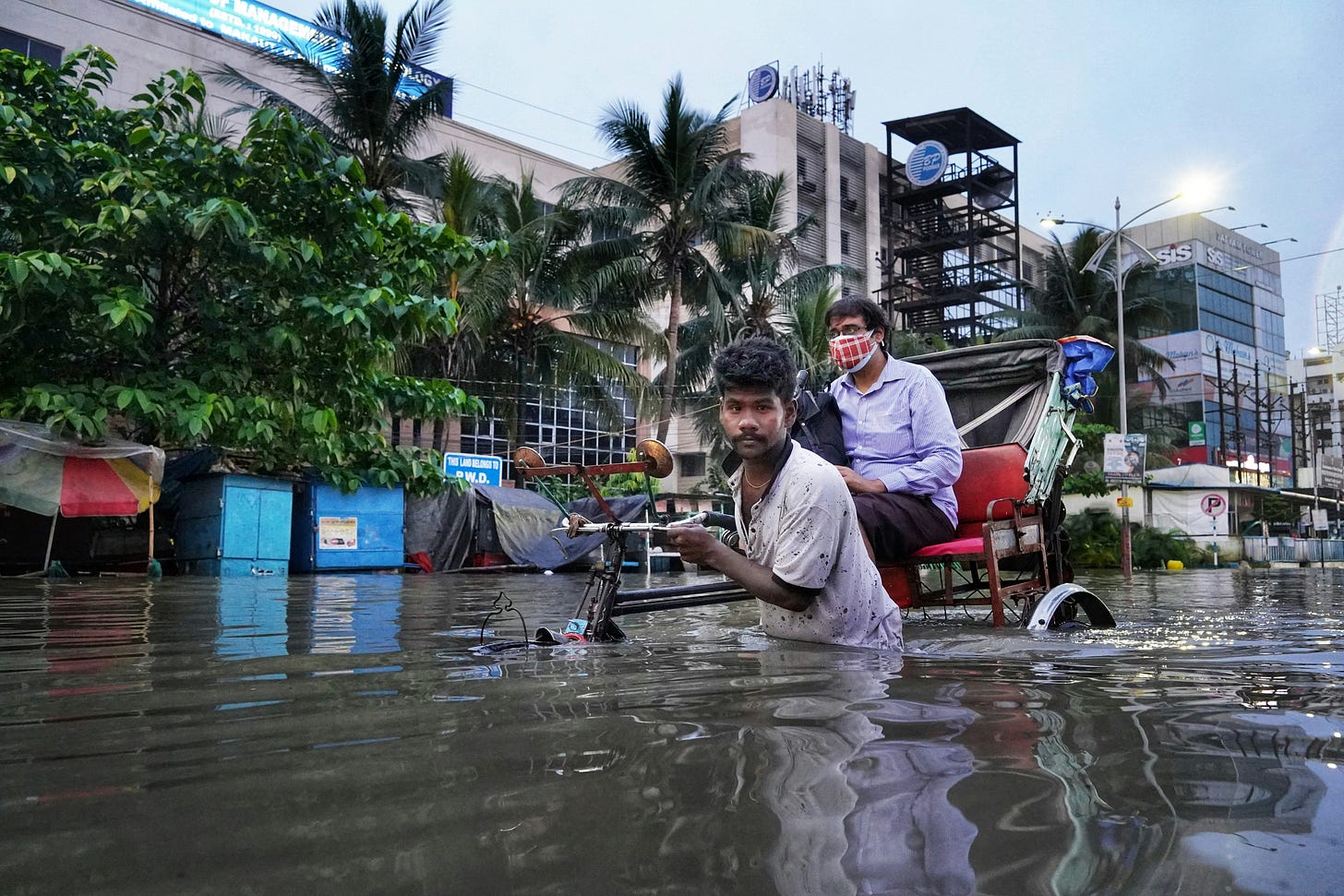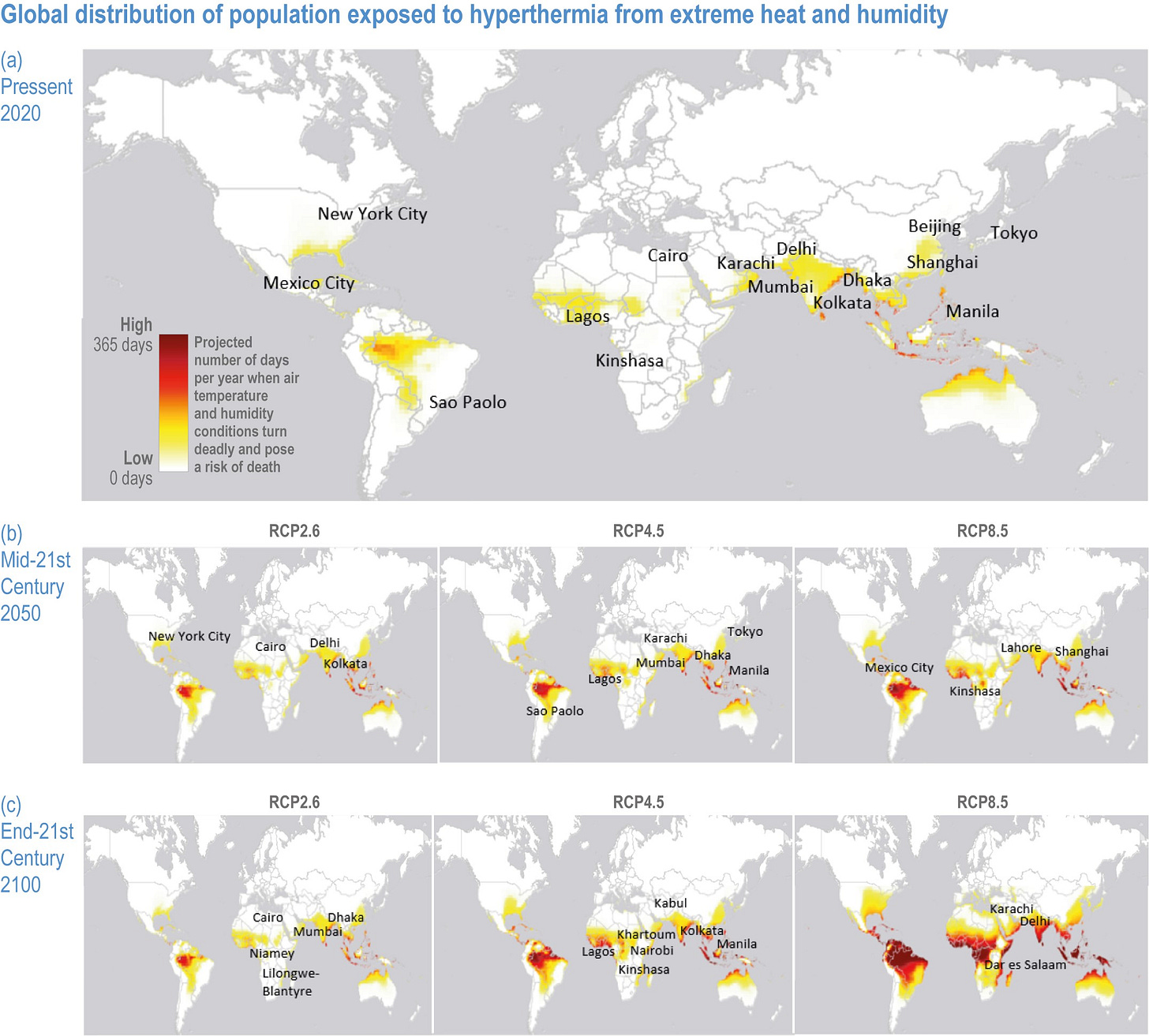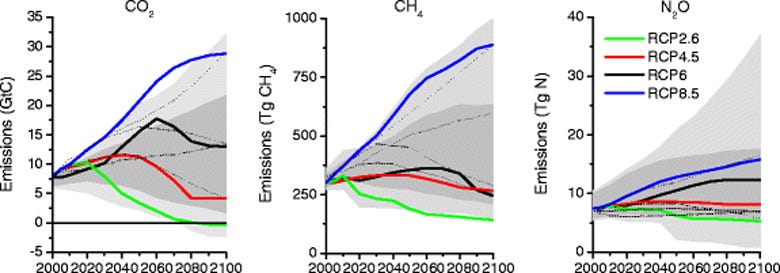Photo by Dibakar Roy on Unsplash
I talked earlier this week about the challenges the state of Florida will face in the coming years due to climate change. I explored how other coastal areas in the United States, particularly the city of New Orleans, will face rising waters throughout this century that will slowly make life there less viable.
But the world is a big place, and many parts of the world will face a harsher future than Florida. Many of those places are concentrated in the global South.
Just take a look at this graphic from the 6th IPCC report
Image courtesy of the 6th IPCC report
Maybe the people reading this will count themselves lucky not to be alive by 2100. Because things look very bad there. The RCP8.5 scenario is a high-emissions scenario frequently referred to as “business as usual”, suggesting that is a likely outcome if society does not make concerted efforts to cut greenhouse gas emissions. Look at that map in the bottom right-hand corner. Much of South America, Africa, and Southeast Asia, as most days of the year in those areas, will be days with deadly heat and humidity. In the business-as-usual case, many of those areas will be given back to nature because people won’t be able to live there.
Compare those deep reds from the 2100 map to today (2020). There is no deep red in today’s map. But it is coming.
The RPC 4.5 scenario is a little more sanguine, but still with plenty of deep reds appearing by 2050. The RPC 4.5 scenario assumes some mitigation of climate change with CO2 equivalent parts per million in the atmosphere topping out at about 650 ppm in 2100.
Representative Concentration Pathways (RCP) are climate change scenarios to project future greenhouse gas concentrations. These pathways (or trajectories) describe future greenhouse gas concentrations (not emissions) and have been formally adopted by the IPCC.
In the RPC 2.6 scenario emissions scenario, emissions start to fall in 2020 (they didn’t) and eventually fall to zero by the end of the century.
Image courtesy of Carbon Brief
Because we haven’t started cutting back emissions for the RPC 2.6 scenario, it is safe to say we won’t be hitting those numbers. The RPC 4.5 scenario then becomes the most optimistic. In that scenario, those deep reds, suggesting insanely hot conditions for most of the year, start creeping into a number of places. Let’s visit some of them.
Lagos, Nigeria – Climate change could be particularly troubling for Lagos because of its enormous population. The city’s population currently tops 13 million and is expected to nearly double in the next 15 years. Like many places on this list, Lagos is close to the center of the Earth, at only 446 miles away from the equator. This will bring more extreme heat days to Lagos, and potentially more drought.
Lagos sits right on the Gulf of Guinea. As sea levels rise the city may face coastal erosion and more and more frequent flooding. The optimistic growth numbers for Lagos may never come to pass, as people may leave the city for a less flood-prone countryside.
Any future government may also struggle to provide services for the millions in Lagos as environmental challenges mount.
Manila, The Philippines. Population 13 million – Manila is expected to feel about 4 degrees C hotter by 2050 than it is today on the average summer day. I’ve been to Manila in the Summer. It is already hot.
Most of Manila is only 5 – 10 meters above sea level. Flooding is a part of life in parts of metropolitan Malina, and will only get worse in the coming years.
Mumbai, India. Population 20 million – Mumbai is vulnerable to climate change on a number of fronts. By 2050, temperatures there are expected to rise by about 2.5 degrees C.
Mumbai sits right on the Arabian Sea and is already prone to flooding from monsoons. Climate change will bring stronger monsoons, as well as sea level rise. In 2021, 50 residents of Mumbai died from landslides as rains washed Mumbai’s hills away.
Jakarta, Indonesia. Population 11 million – About 40 percent of Jakarta is below sea level, and parts of the city are sinking at a rate of more than 1 inch per year. The government of Indonesia has already thrown in the towel. They are moving the capital of Indonesia to the island of Borneo.
Jakarta is only 430 miles from the equator. It is going to get hot and stay hot there for a long time to come. If you are making a list of current megacities that may be the first to be abandoned by humanity, Jakarta may top that list.
Beijing, China. Population 20 million – Half of China’s major cities are sinking because of groundwater extraction and the weight of buildings in these cities. The Yongding, Chaobai, Juma and Wenyu rivers flow through the city, Beijing is also forecast to be about 2 degrees C warmer by 2050.
Shanghai, China. Population 26 million – Unlike Beijing, Shanghai is right on the Ocean, and at only about 4 meters above sea level, much more susceptible to sea level rise.
Dhaka, Bangladesh. Population 20 million. Today, cyclones cost Bangladesh about $1 billion annually. Those numbers are not going to get better. Much of Bangladesh is just above sea level, and sea level rise is likely to devastate the country.
These few cities I highlighted above are only a small sample of major metropolitan areas that will be hit hard by climate change, most of which do not have the resources of an American City like Miami. This list only touches on about 100 million people around the world. It does not include Sao Paulo (22 million), Mexico City (22 million), Cairo (20 million) Karachi (15 million), and dozens of other megacities where climate change will hit people hard in the coming years.
A recent report by the World Bank noted that by 2050, about 143 million could be displaced from their homes because of climate change disasters.
How could it not be more?







How could it not be more? Degrowth is the answer.